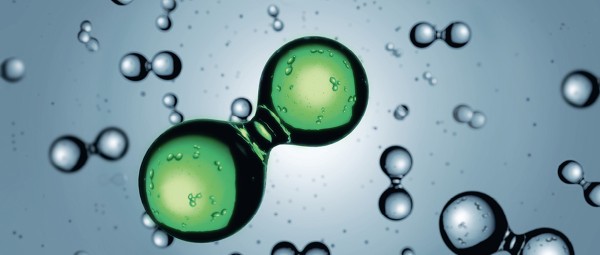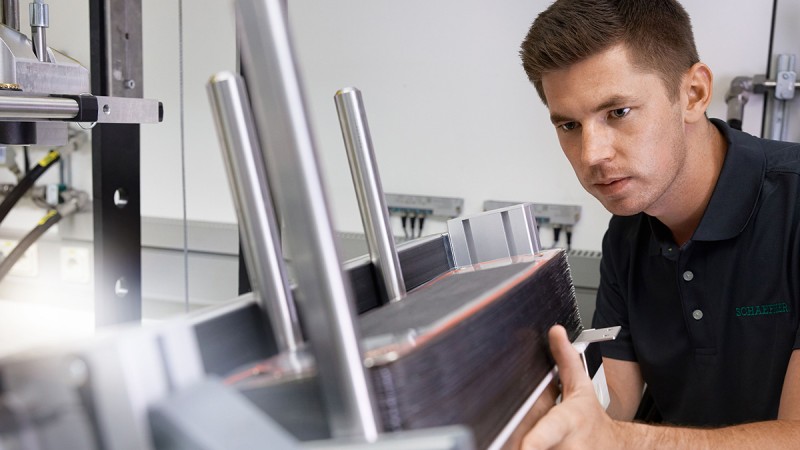Contributing to a more environmentally friendly future with hydrogen technology
Most people know Schaeffler as a producer of bearings and other components and systems for the automotive and industrial sectors, but not many know that the company is also active in hydrogen technology. Schaeffler technology is used to produce hydrogen via electrolysis, but also to transform hydrogen into electric energy. Moreover, the company considers hydrogen a resource for producing clean energy for its own production processes and invests in companies and funds that are facilitating the growth of a green hydrogen ecosystem.
Hydrogen technology plays an important role in Schaeffler’s Roadmap 2025, the company’s strategic framework for the next years. As an automotive and industrial supplier, Schaeffler sees major opportunities for growth in this sector. The activities span several parts of the hydrogen energy chain. On one side, Schaeffler develops the stacks that are needed to separate hydrogen from oxygen in the electrolytic process, starting with components such as bipolar plates.
On the other side, the company also provides bipolar plates that are needed in the fuel cells that convert hydrogen into electricity for purposes such as mobility. The goal of the hydrogen industry, including Schaeffler, is to manufacture these components and systems on an industrial scale, in order to reduce costs so that hydrogen can soon become a competitive energy source.
According to Energinyheter.se, the Nordic countries are well prepared and ready to invest in renewable energy that can be used to create hydrogen.(1) In the past years, the Nordic countries have built up a strong knowledge base and developed a common understanding about the topic. Through a specific R&D program, a strategic cooperation around hydrogen has been developed. The program’s purpose is to increase research and development efforts around hydrogen and other alternative fuels over the next few years in the region. Companies’ and institutions’ willingness to be part of this program is tremendous.(2)
The usage of hydrogen as fuel
Once hydrogen has been produced, transported and stored, the possibilities of its usage are basically limitless: for mobility purposes in nearly any type of vehicle or means of transportation, but also for most industries. To bring hydrogen production up to the level required for industrial production, Schaeffler and other companies are closely working together with research institutes to industrialize the production of stacks and components.
Let’s consider mobility applications and take a hydrogen vehicle – a car, a truck or a bus, for example. In the end, this is also a form of electromobility: thanks to fuel cells, such a vehicle is able to create electric energy from hydrogen, and this energy is used to power the vehicle. What are the advantages compared to classic electromobility? Large batteries are not needed; charging time is much faster; and the vehicle autonomy is significantly higher. And finally, the end-product emitted from the exhaust pipe is pure water.

Today, Schaeffler produces e-axles and other technologies and components for electric vehicles. In addition, the company is also starting the production of bipolar plates for fuel cells to be used in vehicles. This is the purpose of the joint venture, Innoplate, that Schaeffler launched in 2022 together with Symbio, a French hydrogen company in which Michelin and Faurecia are participants. The joint venture’s first plant will be located in Haguenau, France, with a target to produce 50 million bipolar plates and employ more than 120 people by 2030. The first customer will be a major global automotive manufacturer.
Recently Schaeffler also closed an agreement with the French hydrogen producer Lhyfe, regarding the production and purchase of green hydrogen. Lhyfe produces and supplies green hydrogen for mobility and industrial applications. The production locations enable regional and local production of green hydrogen in industrial quantities. Accordingly, an electrolysis plant with a capacity of up to 15 megawatts will be built and operated by Lhyfe on Schaeffler’s site in Herzogenaurach, Germany.
Green hydrogen as a source of energy to further decarbonize the economy
Schaeffler sees green hydrogen as an energy source that can help to further decarbonize the economy. In 2021 Schaeffler signed an agreement with the Swedish start-up H2 Green Steel to purchase 100,000 tons of the virtually CO2-free steel, which is produced using hydrogen, on an annual basis with effect from 2025. This makes Schaeffler the first tier 1 supplier worldwide to become a customer of the innovative start-up company. The agreement is set for the long-term and includes the delivery of strip steel. The steel produced in Sweden reduces Schaeffler’s annual CO2 emissions c. p. by up to 200,000 tons. The agreement is a first major step to make Schaeffler’s supply chain carbon-neutral by 2040.


